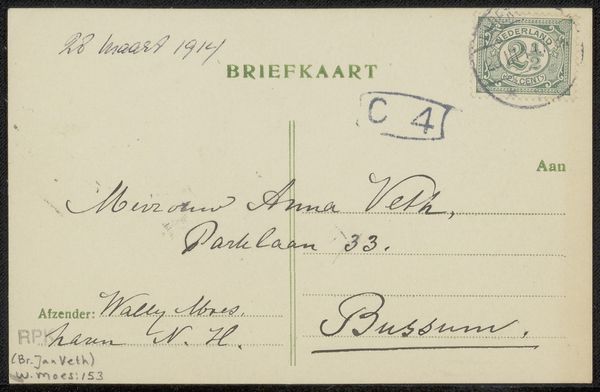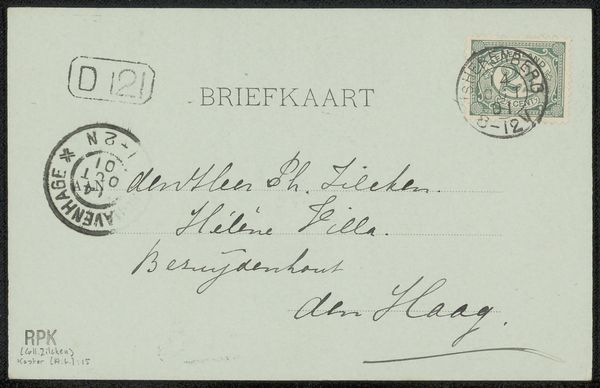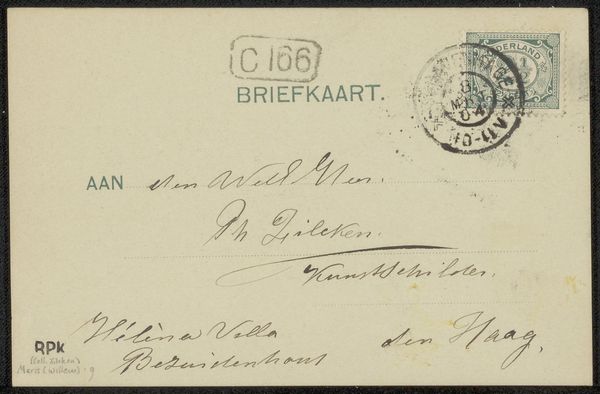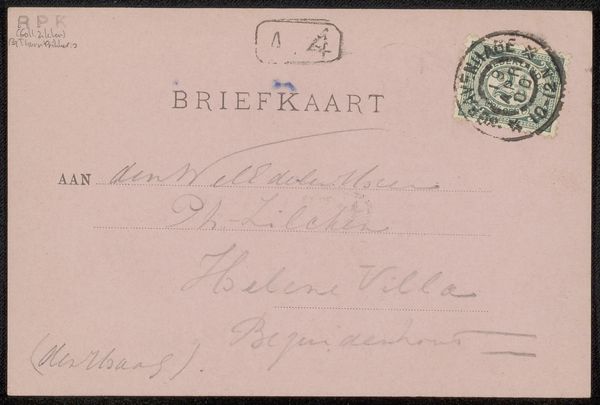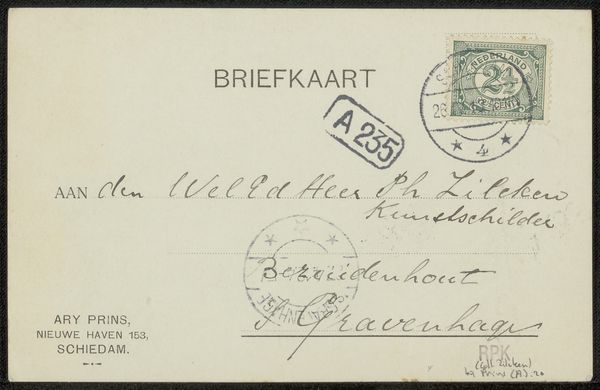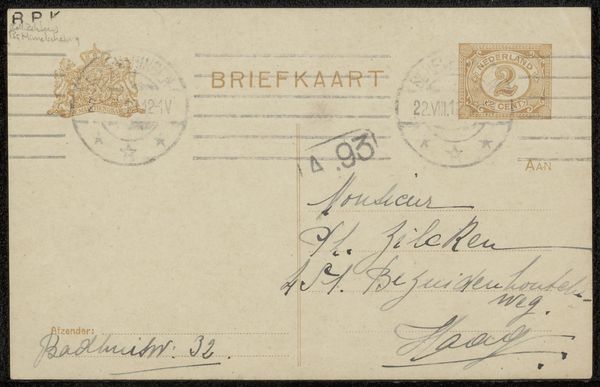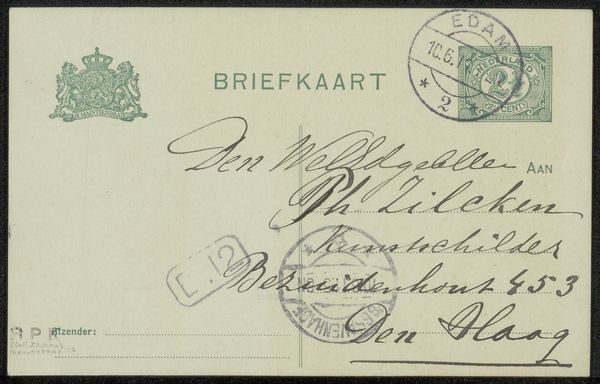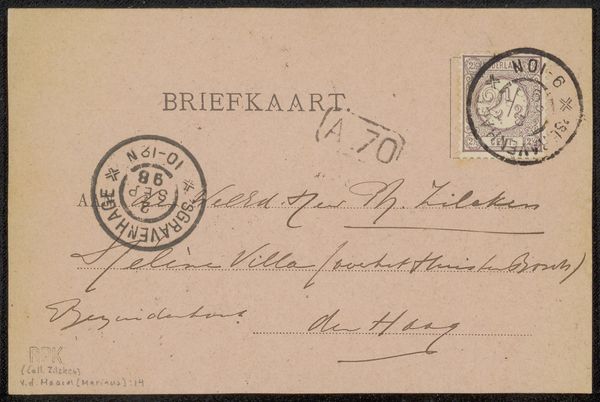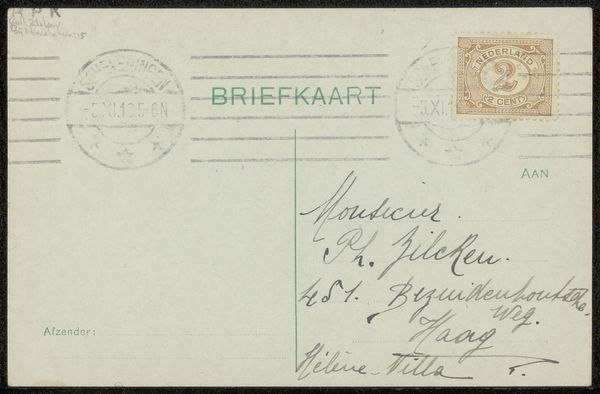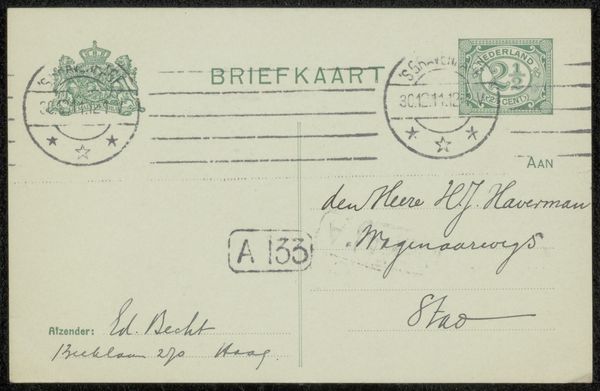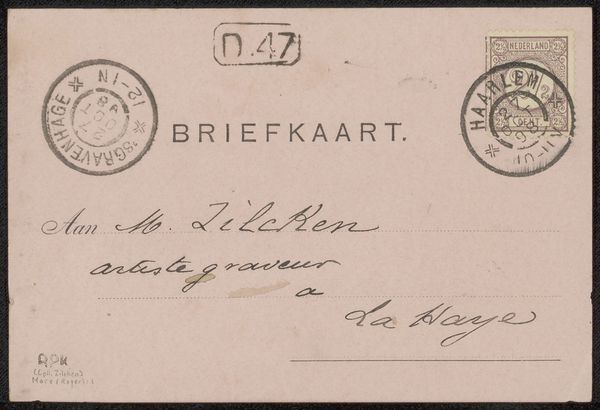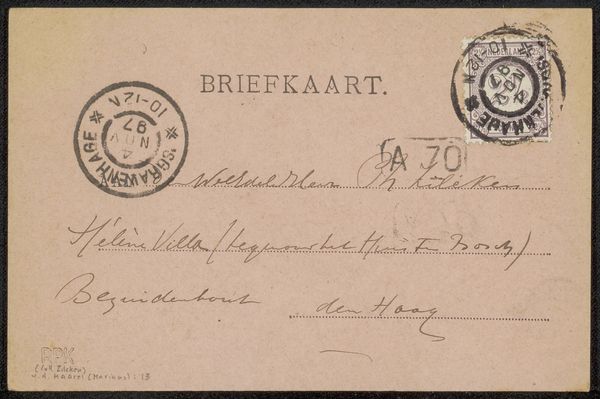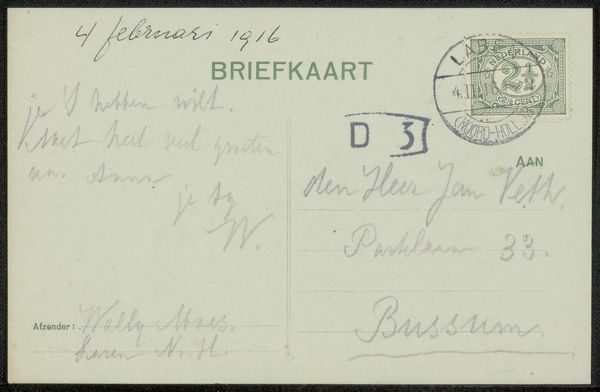
drawing, ink, pen
#
portrait
#
script typeface
#
drawing
#
script typography
#
hand-lettering
#
hand drawn type
#
hand lettering
#
ink
#
hand-drawn typeface
#
fading type
#
thick font
#
pen
#
handwritten font
#
word imagery
Copyright: Rijks Museum: Open Domain
Curator: Look at this fascinating piece! It's a postcard titled "Briefkaart aan Anna Dorothea Dirks," dating from before 1917, by Wally Moes. The mediums used were pen and ink on paper, which create such delicate lines and details. Editor: It feels strangely intimate. The handwriting, the slight imperfections, makes you think of it as a secret note or maybe something quickly dashed off. Curator: It does have a personal feel. Considering the materials – a simple pen, ink, and readily available paper – you realize the immediacy of the message. Postcards were a popular means of quick communication at the time. No fuss. The production costs were quite low which speaks to a more democratized exchange of imagery and sentiments. Editor: True. It wasn't about fancy displays but about connecting. Looking closely, you can trace the labor. The way the ink sits on the paper reveals the speed and the pressure the artist applied while writing the lettering, each character with their different thickness and depth. Curator: What catches my attention is the cursive itself – it feels like a little dance. I find the word “Briefkaart” is stamped above the message which is a rather rigid, in contrast to the beautiful, soft script, an odd paradox. Does the official imposition of type help contain the fragility of personal thought, or release it into public reception? Editor: An interesting contrast to the flow of the handwriting, which makes the actual written words appear more unique, crafted and deeply personal as a consequence of its material creation, wouldn’t you say? Curator: Definitely. The slight imperfections, the almost fading ink, adds a beautiful vulnerability. Imagine Anna Dorothea receiving this during a period when Europe was plunging into the tragedy of the first World War. Perhaps the card, from her acquaintance or loved one, offers just a sliver of beauty amidst such tumultuous times. Editor: This makes one reflect upon how ordinary objects made of simple material became the vessels of memory and interpersonal connections during a particular point in social time. Curator: Indeed. Such a poignant piece to make you ponder what kind of personal items we carry as artwork today to represent communication and material art to our audience. Editor: Agreed. What looks like a fleeting gesture on a card becomes an enduring witness to connection.
Comments
No comments
Be the first to comment and join the conversation on the ultimate creative platform.
